Art & Exhibitions
Cao Fei’s First Solo US Museum Show Channels a Dystopic Future China
Escapism rules in Cao Fei's chilling scenarios.
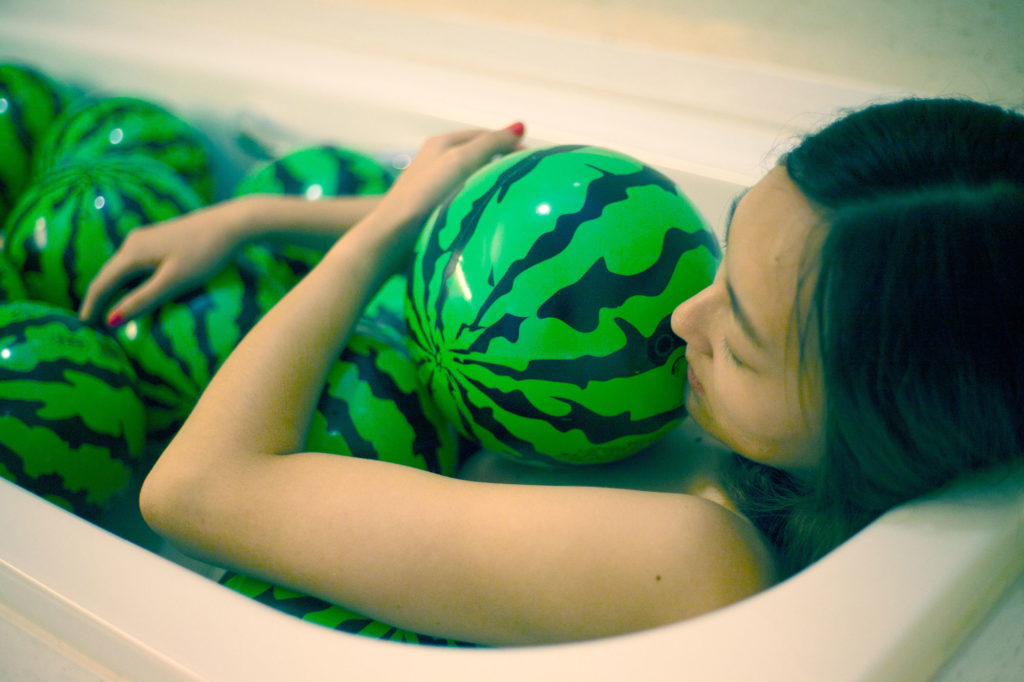
Escapism rules in Cao Fei's chilling scenarios.

Christian Viveros-Fauné

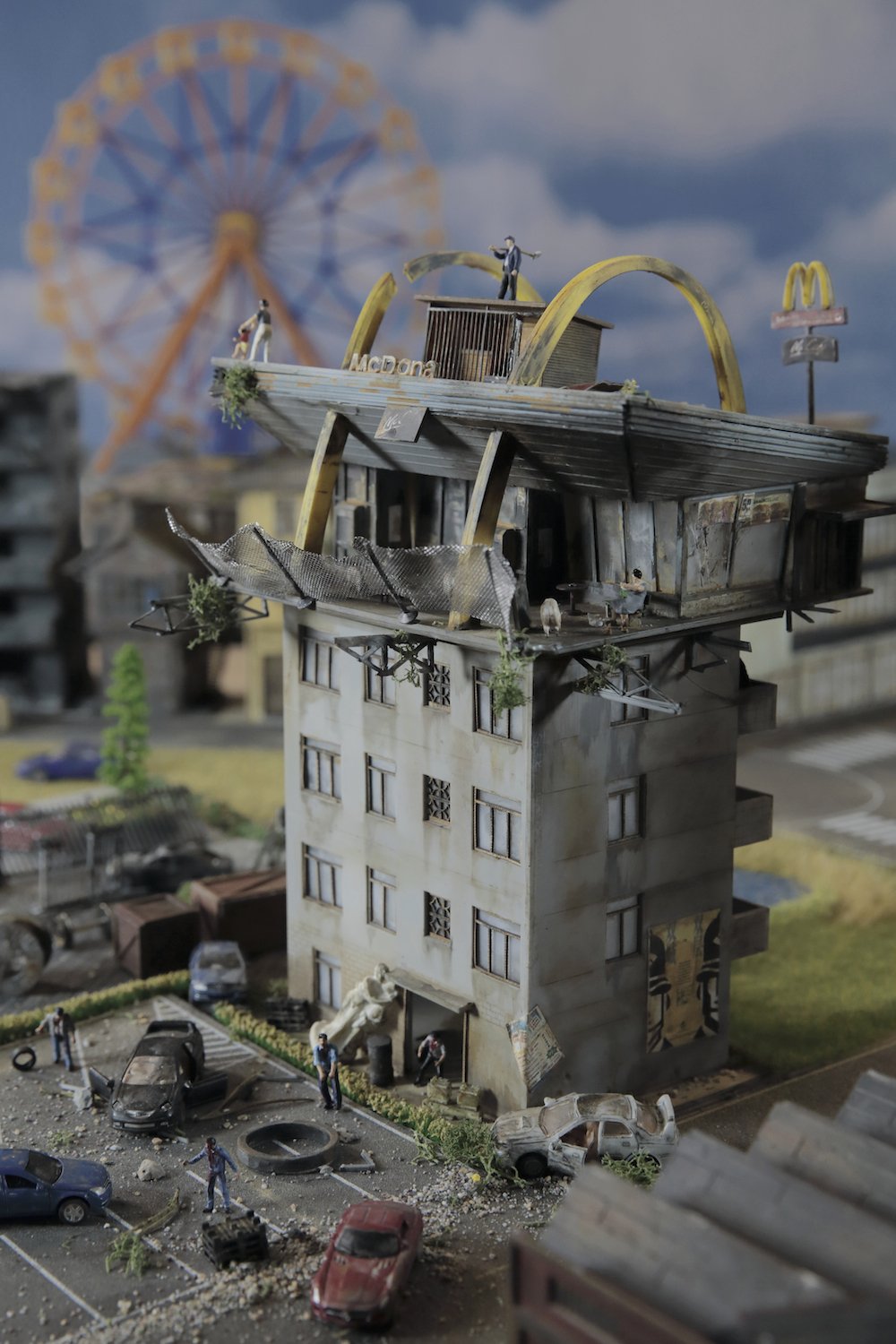
Cao Fei, La Town: White Street (2014).
Photo: Courtesy of MoMA PS1.
Cao Fei has seen the future of China and it looks like Detroit—after a Hollywood zombie apocalypse. That’s certainly the impression one receives on entering the 38-old artist’s eponymously titled exhibition at MoMA PS1. In this, her first US museum solo outing, she presents several roomfuls of dystopic scenarios that include alienated teens, utopian musings, digital escapism, and post-apocalyptic clichés.
Hailed as among the most innovative Chinese artists working today, Cao has made video and digital technology her media of choice in exploring the lives of China’s citizens—especially its young citizens—as they struggle with raised expectations, falling economic growth rates, and a repressive society that censors the press and the Internet. In Cao’s still and moving image works, her country’s messy prospects are characteristically seen through the prism of China’s 13-to-35-year-old demographic. Unfortunately, global youth culture is just as conservative in the East as it is in the West.
Born in Guangzhou, also known as the “world’s factory,” Cao has experienced China’s economic boom first hand as well as the topsy-turvy paradoxes brought by one party laissez-faire capitalism. Among these is the absurdity of life in a city like Guangzhou, where Zaha Hadid’s futuristic opera house rises and whose pollution has been likened to a nuclear winter. If there is a place that symbolizes China’s dangerous contradictions, it’s Cao’s hometown; in turn, this fact gives the artist’s predictions of a coming Asian rust belt both their bite and urgency.
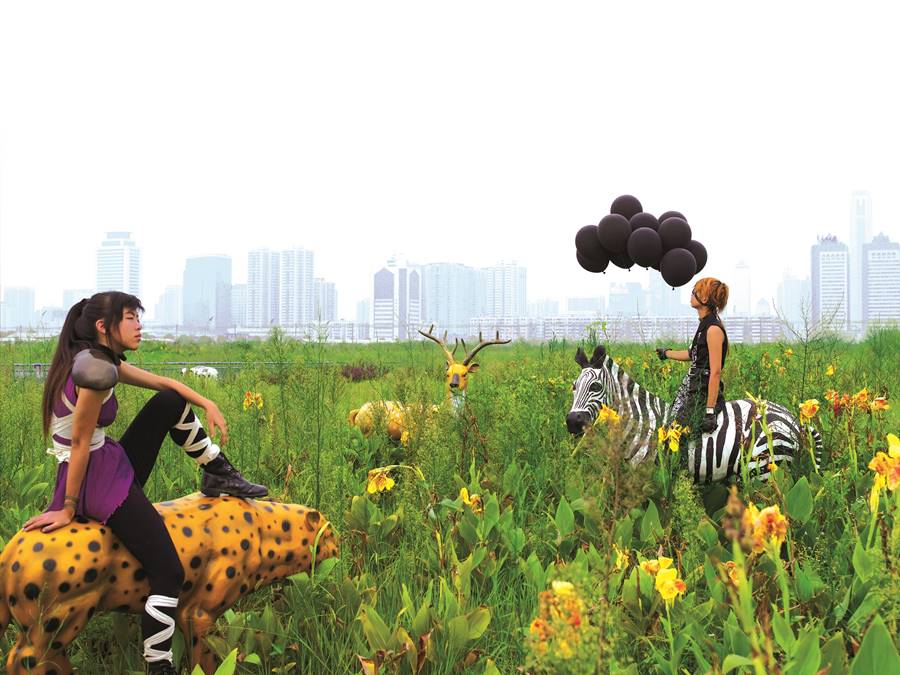
Cao Fei, Cosplayers Series: A Ming at Home (2004).
Image: Courtesy of artist and Vitamin Creative Space.
Cao’s objects, C-prints, standalone videos, and film installations liberally mix together disparate cultural elements to comment on the roiling changes bedeviling Chinese society. Among the more frequently used tropes in her arsenal are Pop aesthetics, social commentary, digital animation, virtual reality, and an evolving preoccupation with youth subcultures. An artist seemingly addicted to the ideal of roleplaying, Fei uses her performances to embark on various analog and digital fantasies that star herself or others. As the artist told artnet News’s Kathleen Massara, she’s insistently in search of what she has termed “resistant power.”
Cao’s exhibition—tidily curated by Klaus Biesenbach, Director, MoMA PS1 and Chief Curator at Large, the Museum of Modern Art—is arrayed around eight rooms on the museum’s first floor and also occupies the VW sponsored dome in the museum’s courtyard. This last space contains an especially raucous multimedia installation: It’s constituent parts include a stage set, fake Chinatown signage, reproductions of hanging birds, musical instruments and the music video stylings of the NYC-based hip-hop group Notorious MSG, one of Cao’s more entertaining collaborators. (Cao held a performance with the hip-hop group this past Sunday.)
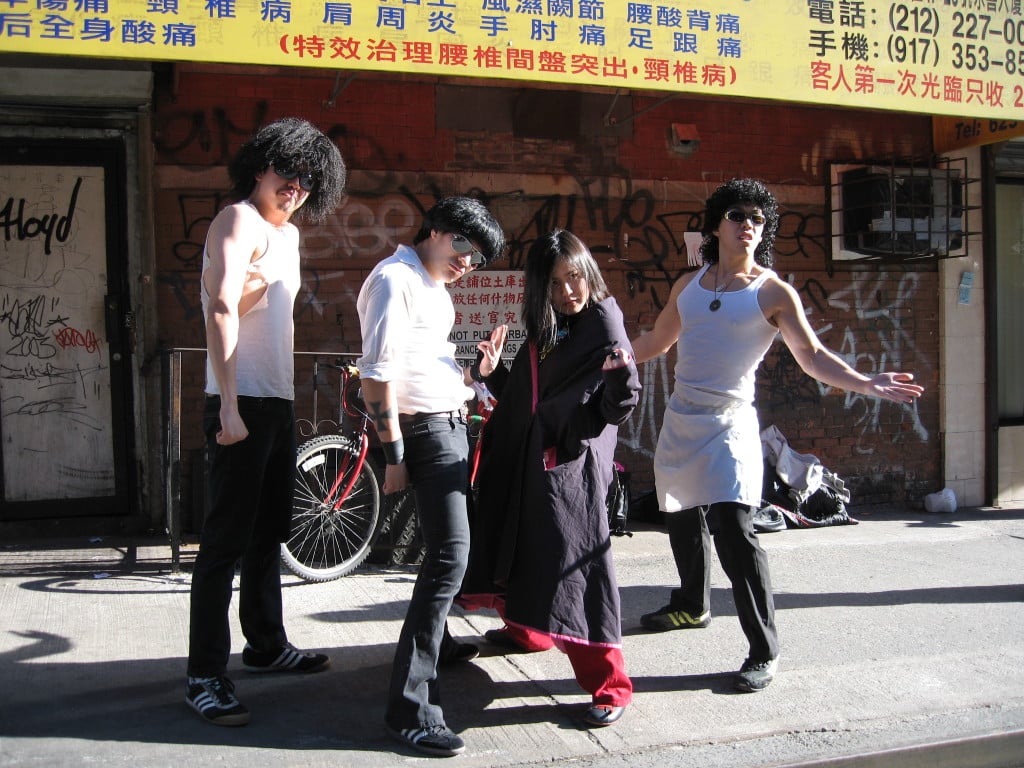
Notorious MSG, with Cao Fei.
According to the museum literature, the band’s three core members currently work at restaurants in New York City’s Chinatown. Their song “Straight out of Canton” captures a great deal of the joy and some of the potential “resistance” Cao ascribes to the group’s all-immigrant appropriation of American hip-hop. However spunky and fun-filled, though, the irony of VW—a company that has admitted to massively evading global emission regulations—sponsoring this portion of the exhibition should be lost on no one.
If Cao’s early films from the 1990s and early 2000s—eight of which are arrayed in a circle on monitors in one of the show’s last room—consist of low-fi abject fictions involving mostly friends and fellow students from the Guangzhou Academy of Fine Arts, her ensuing projects feature a combination of social realist portraiture and escapist make-believe.
In 2004, for instance, Cao followed a tribe of Cosplayers around Guangzhou. In her photographs and videos a troupe of young adults lunge, thrust, and pose like American Civil War reenactors in full manga and anime costume. Like other global simulators in similar soul-killing locales—say, Brussels or Albany—they ritually refight their own Gettysburgs amid their city’s ubiquitous gray high-rises and concrete plazas.
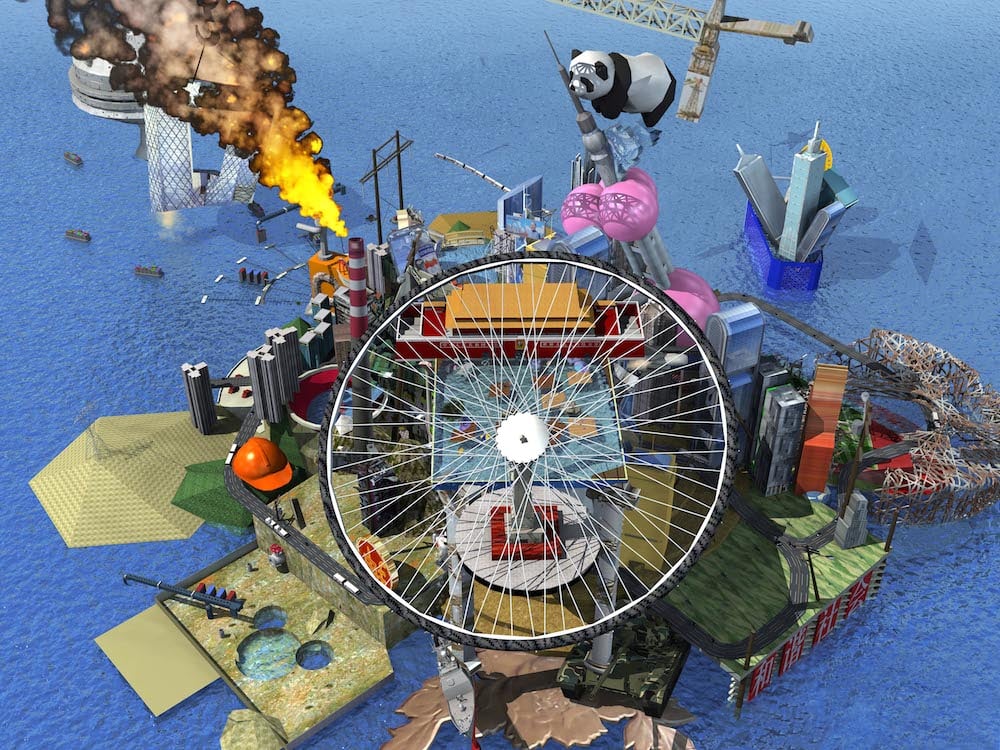
Cao Fei, RMB City – A Second Life City Planning (2007).
Photo: Courtesy of MoMA PS 1.
A second project that goes all-in with a richly evasive Western subculture is the artist’s embrace of Second Life: Linden Lab’s formerly hot, now not virtual world that companies like Amazon, American Apparel, and Disney rushed to brand in the early 2000s (sales in that virtual universe peaked at $64 million in 2006). From 2007 to 2011, Fei purchased enough alt-real estate to build RMB City, a digital mashup of various global gothams she ghosts with China Tracy, her own Western-looking avatar.
In real life—or at least in the artist’s exhibition—the project is represented by a promotional video, white construction tools, and a broker’s reception desk. In the wall text, Cao describes the effects of her installation: “It’s perhaps no longer important to draw the line between the virtual and the real, as the border between the two has been blurred.” The reaction of hardline Chinese officials to this fanciful fairytale is easy to fathom: From Cao Fei’s mouth to Xi Jinping’s ears.
But not all of Cao’s elaborate artworks sound the same naïve fugitive note. In 2006, for instance, she took advantage of a residence in a Siemens lighting factory to juxtapose the daydreams of workers with their lives as they are actually lived inside a manufacturing plant. The ensuing project, Whose Utopia?, materializes these workers aspirations through photographs, a newspaper titled “Utopia Daily,” and a video by the same title. In Cao’s film a prima ballerina in wings and a fuzzy white halo dances amid shop machinery, an older gentleman slides silkily around the factory floor to Chinese pop music, and a young man acts out the dream of being a rock guitarist. Extravagant fantasies all, they are saved from mere amusement by one true thing. They are located inside a place of actual exploitation.
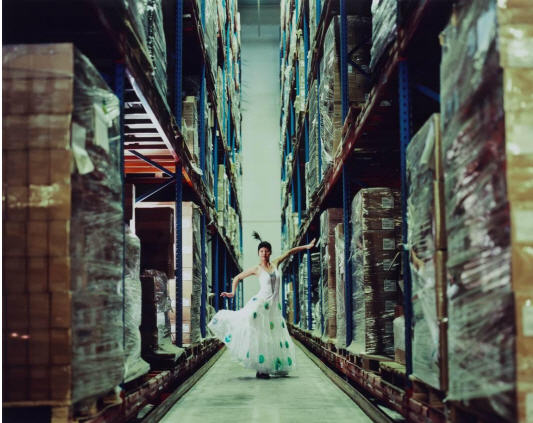
Cao Fei, My Future is Not a Dream No.2 (2006). Courtesy of Hara Museum of Contemporary Art. © Cao Fei / Deutsche Bank Collection.
Cao’s most recent project, La Town, on the other hand, falls back on Hollywood boilerplate to depict the kind of post-apocalyptic imaginings that animate mass entertainment vehicles like HBOs The Walking Dead and MILFs Versus Zombies. The film, which opens Cao’s current survey, enlists 3D dioramas to present a Breugel-like portrait of civilization struck by an unspecified disaster. As such, it begs for something more specific, less generic, more critical and less dependent on Western clichés—including copycat subcultures—to convincingly make its dystopic point. Despite some inventiveness, the first US museum show by this fast-rising Chinese art star invites adult skepticism. Escapism is not resistance, and fantasy is not utopia.